
Rayong: Thailand's Coastal Gem
Discover Rayong: Thailand's hidden coastal paradise, known for its pristine beaches, fresh seafood, and vibrant local culture. Perfect for a relaxed and authentic Thai experience.
Rayong, located along the eastern Gulf of Thailand, is a serene beachside city known for its unspoiled natural beauty and tranquil atmosphere. Unlike the bustling tourist hubs of Pattaya and Phuket, Rayong offers a more relaxed and authentic Thai experience. The city is famous for its pristine beaches, lush fruit orchards, and vibrant seafood markets, making it a perfect destination for those seeking both adventure and relaxation. One of Rayong's main attractions is its stunning coastline, featuring beaches like Mae Ram Phueng and Laem Mae Phim. These beaches are ideal for sunbathing, swimming, and enjoying water sports. The nearby islands of Koh Samet and Koh Mun Nork are also popular for their crystal-clear waters and vibrant marine life, perfect for snorkeling and diving enthusiasts. In addition to its natural beauty, Rayong is home to several cultural and historical sites, including the Phra Chedi Klang Nam, a pagoda located on an island in the Rayong River, and the Wat Pa Pradu, an ancient temple with a reclining Buddha statue. Rayong's culinary scene is another highlight, especially for seafood lovers. The Ban Phe market is a must-visit for its fresh seafood, which can be cooked on the spot at nearby eateries. The city is also famous for its tropical fruits, particularly durian and mangosteen, which are celebrated during the annual fruit festival. For those interested in exploring the local culture, Rayong offers several traditional festivals and events throughout the year, providing a glimpse into the region's rich heritage.
Local tips in Rayong
- Visit during the fruit season (May to July) to enjoy the freshest tropical fruits, especially durian and mangosteen.
- Rent a scooter to explore the coastline and visit less crowded beaches and hidden gems.
- Take a day trip to Koh Samet for snorkeling and enjoying its beautiful beaches.
- Visit the Ban Phe market early in the morning for the best selection of fresh seafood.
- Learn some basic Thai phrases; locals appreciate the effort and it can enhance your travel experience.
Neighbourhoods in Rayong
Rayong: Thailand's Coastal Gem
Rayong, located along the eastern Gulf of Thailand, is a serene beachside city known for its unspoiled natural beauty and tranquil atmosphere. Unlike the bustling tourist hubs of Pattaya and Phuket, Rayong offers a more relaxed and authentic Thai experience. The city is famous for its pristine beaches, lush fruit orchards, and vibrant seafood markets, making it a perfect destination for those seeking both adventure and relaxation. One of Rayong's main attractions is its stunning coastline, featuring beaches like Mae Ram Phueng and Laem Mae Phim. These beaches are ideal for sunbathing, swimming, and enjoying water sports. The nearby islands of Koh Samet and Koh Mun Nork are also popular for their crystal-clear waters and vibrant marine life, perfect for snorkeling and diving enthusiasts. In addition to its natural beauty, Rayong is home to several cultural and historical sites, including the Phra Chedi Klang Nam, a pagoda located on an island in the Rayong River, and the Wat Pa Pradu, an ancient temple with a reclining Buddha statue. Rayong's culinary scene is another highlight, especially for seafood lovers. The Ban Phe market is a must-visit for its fresh seafood, which can be cooked on the spot at nearby eateries. The city is also famous for its tropical fruits, particularly durian and mangosteen, which are celebrated during the annual fruit festival. For those interested in exploring the local culture, Rayong offers several traditional festivals and events throughout the year, providing a glimpse into the region's rich heritage.
When is the best time to go to Rayong?
Iconic landmarks you can’t miss
Rayong Aquarium
Explore the enchanting underwater world at Rayong Aquarium, a top tourist destination in Thailand showcasing vibrant marine life and conservation efforts.
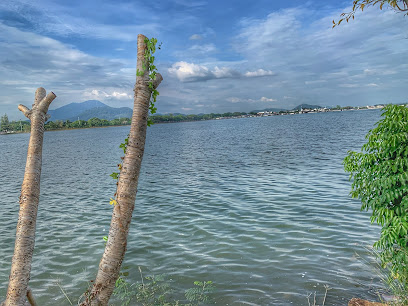
Khao Laem Ya–Mu Ko Samet National Park
Explore the stunning Khao Laem Ya–Mu Ko Samet National Park, a natural wonder with breathtaking beaches, diverse wildlife, and endless outdoor adventures.
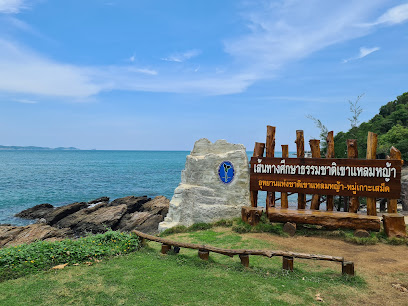
Ko Kloi Floating Market
Explore the enchanting Ko Kloi Floating Market in Rayong, where vibrant culture, delicious street food, and unique shopping await every traveler.
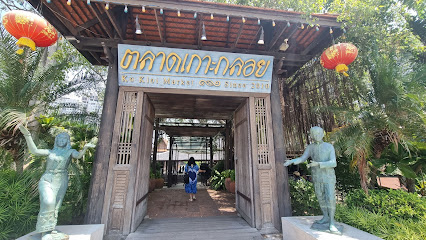
Thung Prong Thong (Golden Meadow)
Experience the enchanting beauty of Thung Prong Thong, a stunning natural attraction in Rayong known for its golden meadows and vibrant mangrove forests.
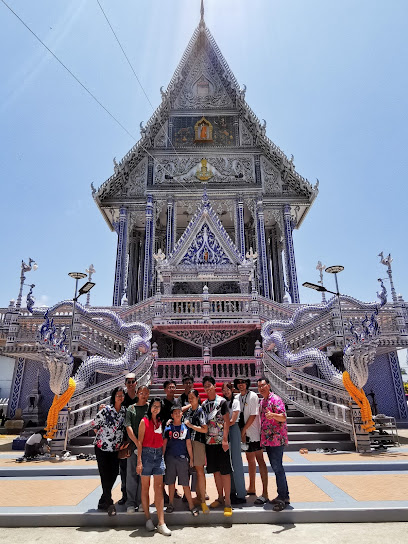
Sunthon Phu Monument
Explore the Sunthon Phu Monument, a cultural gem in Klaeng District, where history and literature converge in a stunning natural setting.
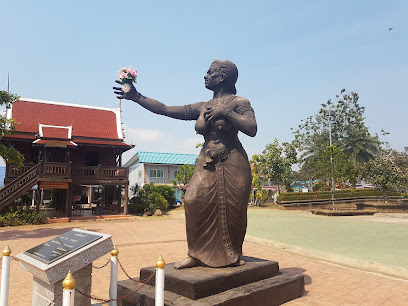
Laem Charoen Beach
Experience the serene beauty of Laem Charoen Beach, a hidden gem in Rayong, Thailand, offering relaxation, swimming, and stunning sunsets.

Suan Lamai
Explore the serene beauty of Suan Lamai, a stunning garden attraction in Rayong, Thailand, perfect for relaxation and photography.
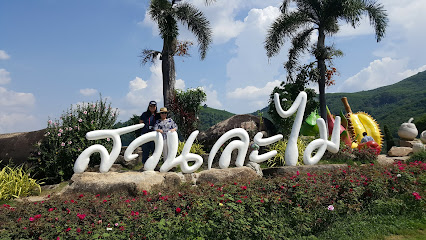
Moonlight Beach
Explore the breathtaking beauty of Moonlight Beach in Rayong, Thailand, where golden sands meet crystal-clear waters and stunning sunsets await.

Wat Tham Khao Prathun
Discover the tranquility of Wat Tham Khao Prathun, an exquisite Buddhist temple that offers a peaceful escape amidst nature's beauty in Rayong, Thailand.
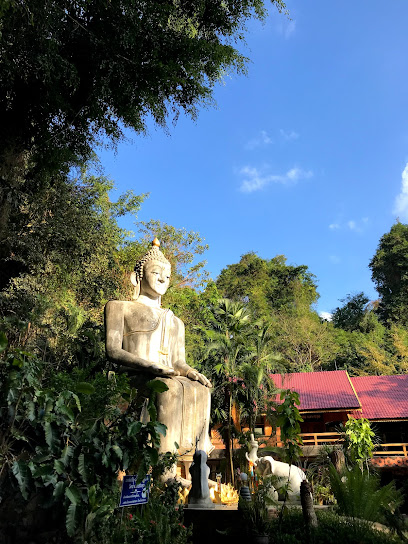
Suan Si Mueang
Explore the peaceful beauty of Suan Si Mueang, Rayong's charming city park, perfect for nature lovers and those seeking a serene escape.
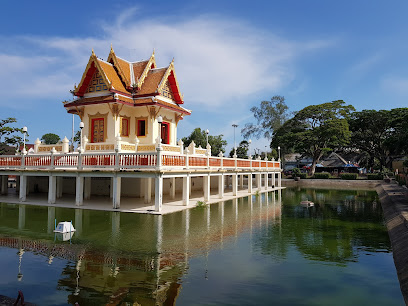
Phra Chedi Klang Nam (Samut Chedi)
Explore the breathtaking Phra Chedi Klang Nam, a stunning pagoda in Rayong, Thailand, where spirituality meets architectural beauty amidst serene landscapes.

Ruksame Bridge
Discover the breathtaking Ruksame Bridge in Rayong, Thailand, a scenic marvel perfect for leisurely strolls and stunning photography amidst nature.
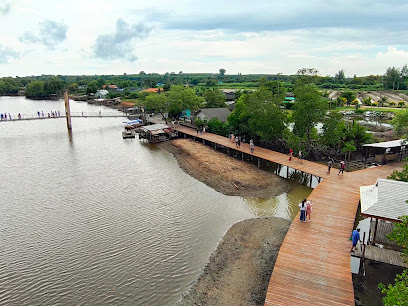
Suan Wang Kaew
Discover tranquility and authentic Thai cuisine at Suan Wang Kaew, a serene resort hotel in Rayong, perfect for relaxation and exploration.

Khao Laem Ya Viewpoint
Experience the stunning vistas and vibrant sunsets at Khao Laem Ya Viewpoint, a scenic gem in Rayong, Thailand, perfect for nature lovers and photographers alike.
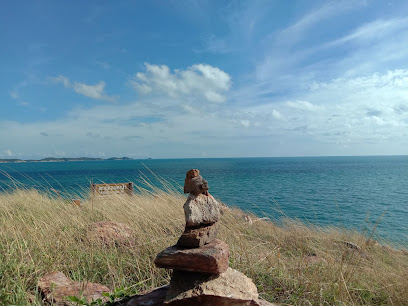
Suan Son Beach
Discover the serene beauty of Suan Son Beach, a tropical paradise in Rayong, Thailand, perfect for relaxation, adventure, and unforgettable experiences.
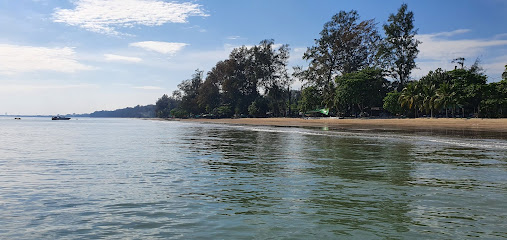
Unmissable attractions to see
Nong Nooch Botanical Garden
Explore the stunning beauty of Nong Nooch Botanical Garden, a lush paradise in Sattahip, featuring vibrant flora and captivating cultural performances.
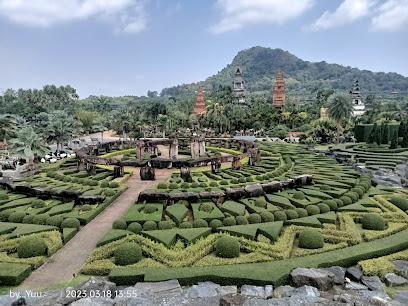
Pattaya Floating Market
Discover the essence of Thai culture at Pattaya Floating Market, where local crafts, delicious street food, and scenic boat rides come together in a vibrant setting.
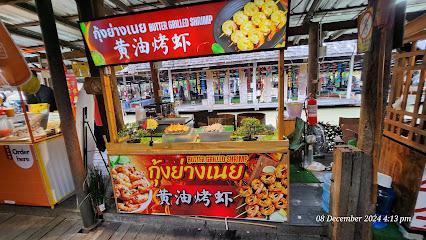
Underwater World Pattaya
Discover the mesmerizing aquatic life at Underwater World Pattaya, where adventure meets education in a stunning marine environment.

Columbia Pictures Aquaverse
Experience the ultimate aquatic adventure at Columbia Pictures Aquaverse, where thrilling rides and movie magic come together in a spectacular water park.
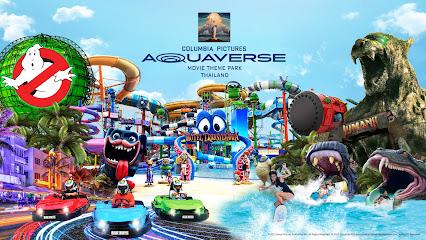
The Million Years Stone Park & Pattaya Crocodile Farm
Discover the beauty of nature and wildlife at The Million Years Stone Park & Pattaya Crocodile Farm, a must-visit attraction in Chon Buri, Thailand.
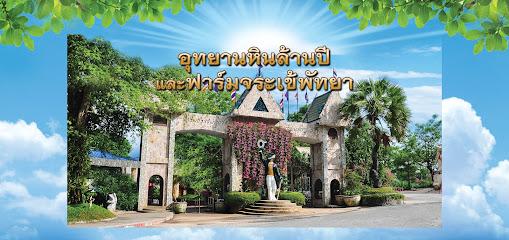
Rayong Aquarium
Uncover the beauty of marine life at Rayong Aquarium, a family-friendly attraction in Thailand showcasing colorful fish and engaging exhibits.
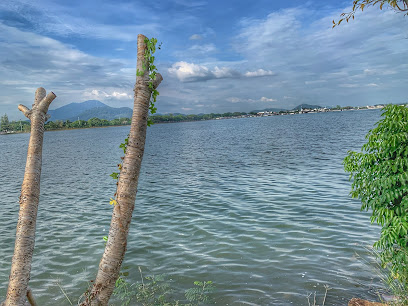
Jomtien Beach
Experience the breathtaking beauty of Jomtien Beach in Chon Buri, where golden sands meet vibrant culture and thrilling water activities.
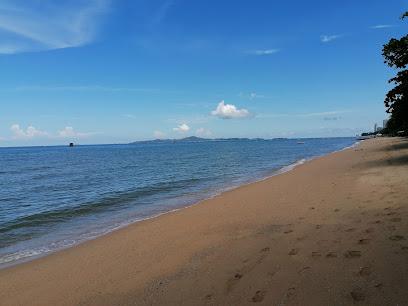
Family Park Pattaya
Discover the joy of wildlife and family fun at Family Park Pattaya, a perfect blend of nature and recreation for visitors of all ages.
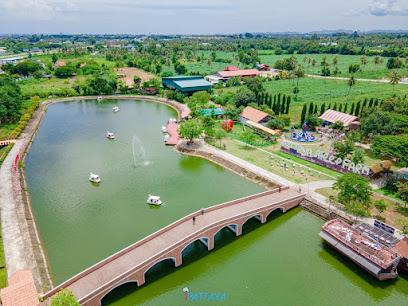
Royal Thai Navy Sea Turtle Conservation Center
Explore the Royal Thai Navy Sea Turtle Conservation Center: A sanctuary dedicated to protecting marine life and educating visitors about sea turtles.
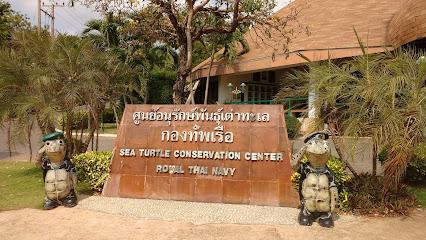
FROST Magical Ice of Siam
Discover the enchanting Frost Magical Ice of Siam, a unique frozen wonderland featuring incredible ice sculptures and family-friendly adventures in Chon Buri, Thailand.
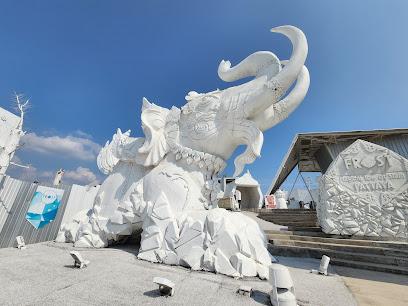
Ko Kloi Floating Market
Explore the enchanting Ko Kloi Floating Market in Rayong, where vibrant culture meets delicious Thai street food and unique shopping experiences.
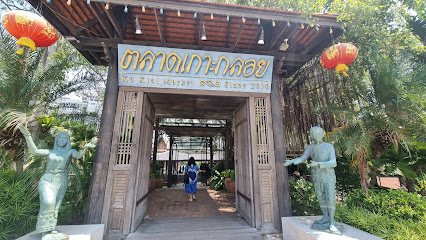
Thung Prong Thong (Golden Meadow)
Explore Thung Prong Thong, a serene tourist attraction in Rayong, Thailand, featuring lush mangroves and delightful local seafood.
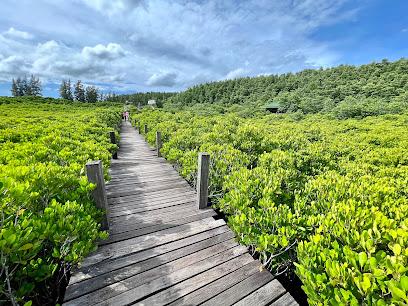
Big Bee Farm Pattaya
Discover the sweet side of Thailand at Big Bee Farm Pattaya, where beekeeping and honey tasting create a unique adventure for all ages.
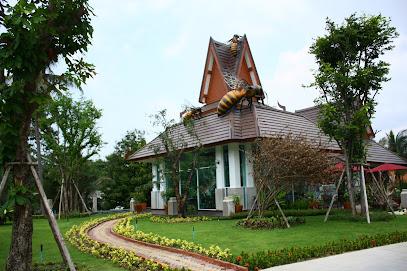
Bang Saray Beach
Experience the tranquil beauty of Bang Saray Beach, where golden sands meet crystal-clear waters in a serene coastal paradise.
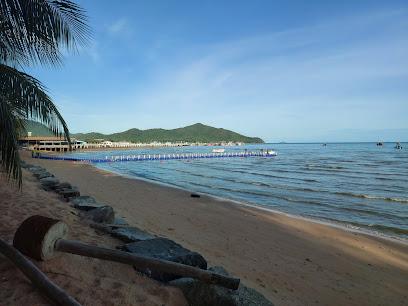
Wat Yan Nasangwararam Woramahawihan
Experience the serene beauty and rich culture of Wat Yan Nasangwararam, a breathtaking Buddhist temple in Pattaya, Thailand, perfect for spiritual reflection.
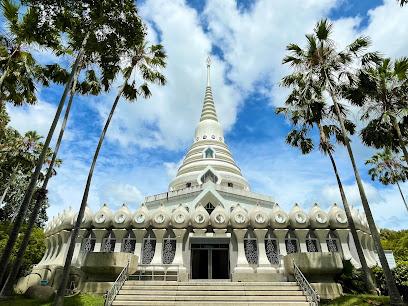
Essential places to dine
The Bizarre Island
Experience unique culinary delights at The Bizarre Island in Rayong - where every dish tells a story!
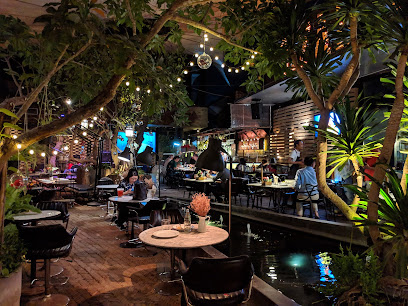
Naidol Thai Style Restaurant ,1996.
Savor the essence of Thailand at Naidol Thai Style Restaurant in Rayong—where authentic flavors meet warm hospitality.
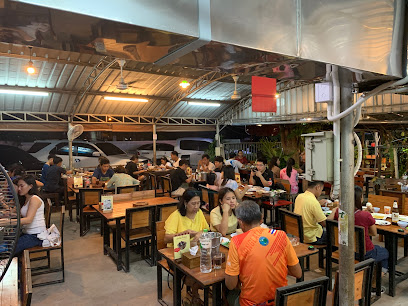
Saengchan Seafood
Discover fresh seafood delights at Saengchan Seafood in Rayong – where every meal is a feast by the sea.
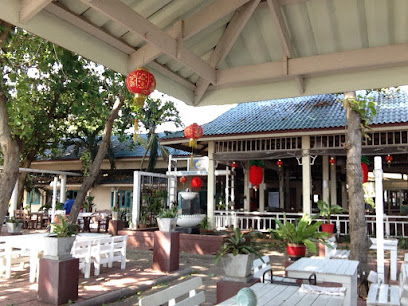
OSHINEI Rayong
Discover the essence of Japanese cuisine at OSHINEI Rayong – where tradition meets flavor in a vibrant setting.
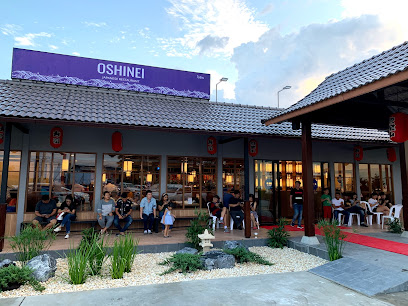
The Two Trees (Terra Cotta Rayong)
Experience authentic Thai cuisine surrounded by nature at The Two Trees in Rayong – where delicious food meets serene ambiance.
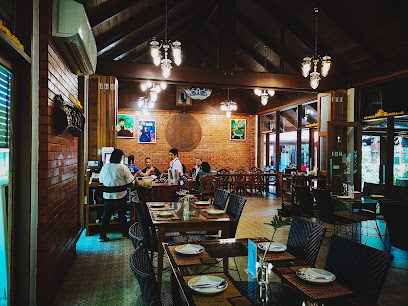
Ban Kru Muu
Experience authentic Thai flavors at Ban Kru Muu – a delightful dining destination in Rayong offering fresh dishes at affordable prices.
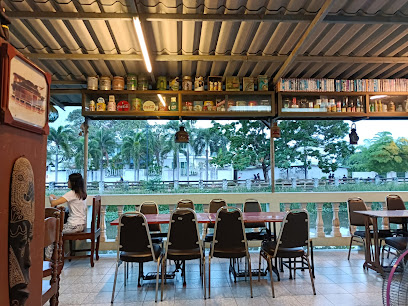
Elementi Rooftop Restaurant & Bar
Discover breathtaking views and exceptional Western cuisine at Elementi Rooftop Restaurant & Bar in Rayong.
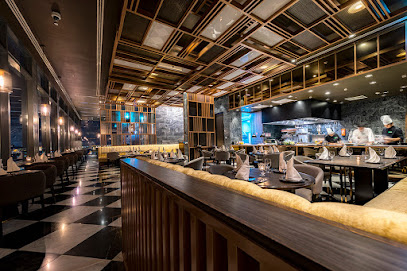
Odile Steak House
Discover exquisite flavors at Odile Steak House in Rayong – where every steak tells a story.
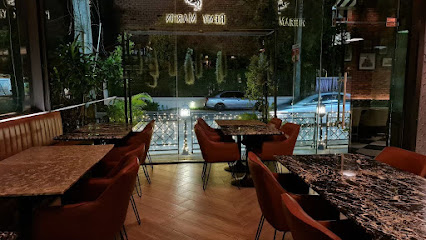
Field Good Food And Fun
Experience the vibrant flavors of Thailand at Field Good Food And Fun in Rayong—where culinary delight meets lively atmosphere.
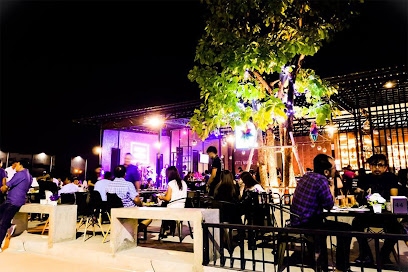
German Bierhaus Rayong
Experience authentic German cuisine and exceptional beers at German Bierhaus Rayong – where every meal feels like a festive celebration.
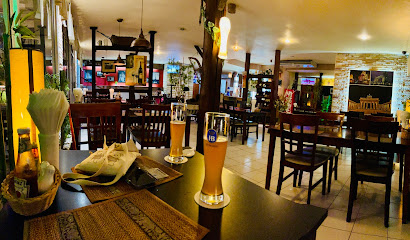
Yurak Rayong
Experience authentic Thai cuisine at Yurak Rayong - where every dish tells a story of flavor and tradition.
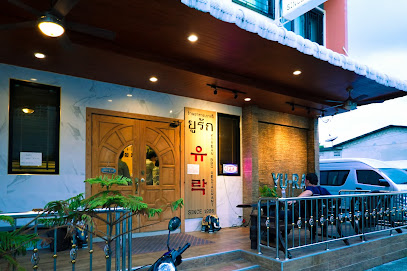
Wooden Spoon Restaurant
Discover authentic Thai cuisine at Wooden Spoon Restaurant in Rayong – a culinary delight for every food lover!
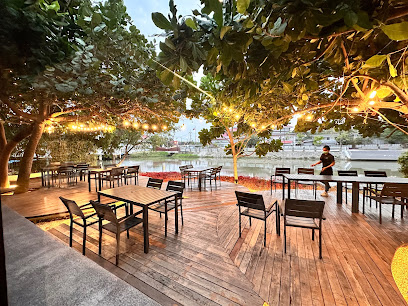
ร้านอาแปะ ระยองราม่า
Experience authentic Thai cuisine at ร้านอาแปะ ระยองราม่า, where every dish tells a story of flavor and tradition in Rayong.
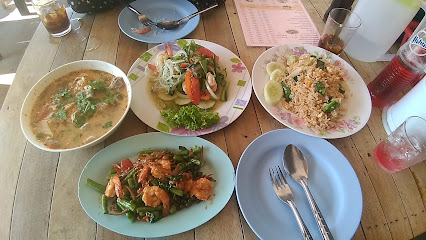
Soodjai Borigarn 2509
Experience authentic Thai flavors at Soodjai Borigarn 2509 in Rayong – where every dish tells a story.

ORDER restaurant and community
Experience the best of local and international cuisine at ORDER Restaurant in Rayong - where flavor meets hospitality.
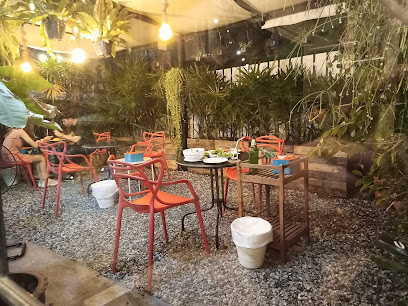
Markets, malls and hidden boutiques
Central Rayong
Discover the vibrant shopping and dining experience at Central Rayong, the premier shopping mall in Thailand's beautiful Rayong province.
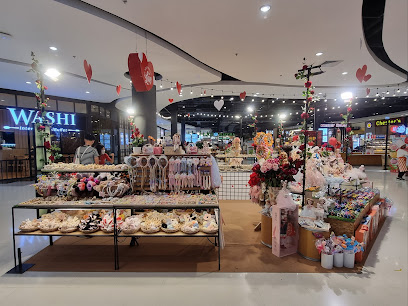
Passione Shopping Destination
Explore an exciting blend of shopping, dining, and entertainment at Passione Shopping Destination in Rayong, Thailand.
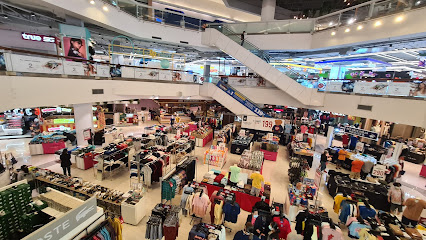
Robinson Rayong
Discover Robinson Rayong, a vibrant department store offering diverse shopping and dining options in the heart of Rayong, Thailand.
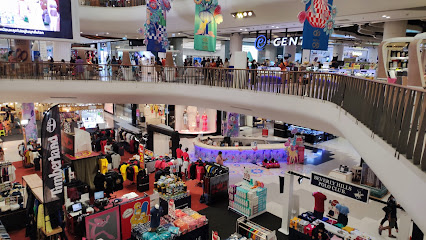
Laem Thong Department Store
Discover the vibrant shopping experience at Laem Thong Department Store in Rayong, Thailand - a perfect blend of retail, dining, and entertainment.
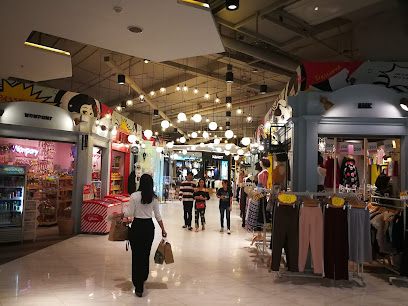
Index Living Mall Rayong
Discover stylish furniture and décor at Index Living Mall Rayong, your ultimate shopping destination for modern home living.
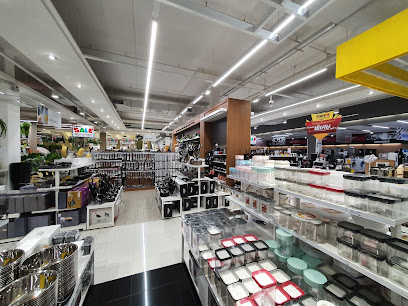
UNIQLO Central Rayong
Explore stylish and affordable fashion at UNIQLO Central Rayong, your ultimate clothing destination in the heart of Thailand's vibrant shopping scene.
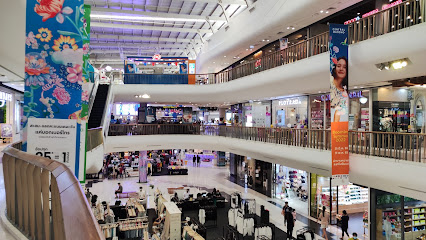
Rayong Shopping Mall
Explore the vibrant Rayong Shopping Mall for a unique shopping and dining experience in the heart of Rayong, Thailand.
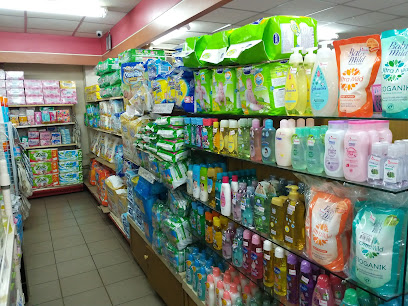
WIC Multibrand Store
Discover the vibrant fashion scene at WIC Multibrand Store in Rayong, where local styles meet contemporary trends for a unique shopping experience.
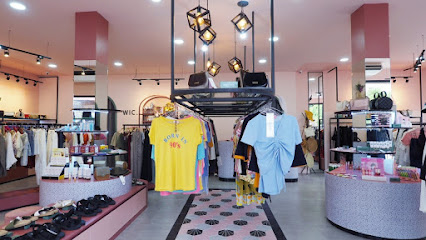
Market Village Rayong
Discover the vibrant shopping experience at Market Village Rayong, where local culture meets modern convenience in Thailand's beautiful seaside town.
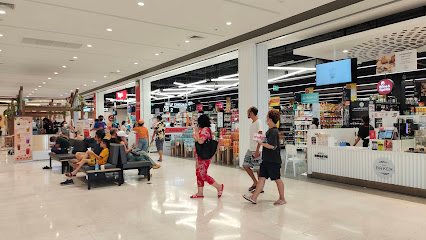
MINISO(Passione Rayong)
Explore MINISO in Rayong, where affordable gifts and unique finds await every traveler seeking memorable souvenirs.
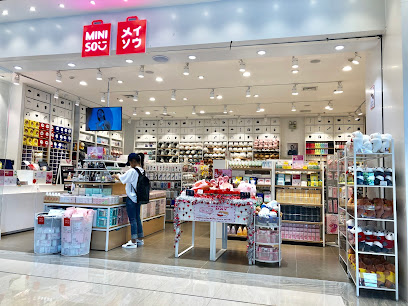
Oriental Princess Shop สาขา แพชชั่น ช้อปปิ้ง เดสติเนชั่น ระยอง
Explore the beauty haven of Oriental Princess in Rayong, where high-quality cosmetics and skincare await in a vibrant shopping destination.
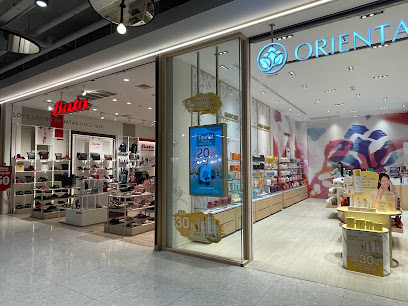
เฮียบู๊
Experience the heart of Rayong at เฮียบู๊, a local general store offering authentic Thai culture and unique products.
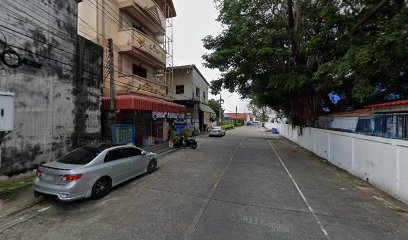
ร้าน แป้ง บูติค
Explore fashionable finds at ร้าน แป้ง บูติค in Rayong, where contemporary style meets local charm.
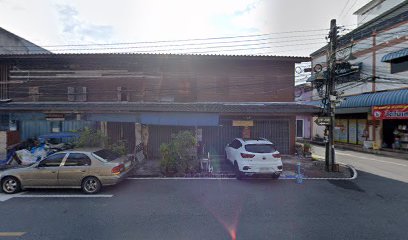
Sampeng1 Rayong
Experience the essence of Thai craftsmanship at Sampeng1 Rayong, a premier destination for unique home goods and artisanal treasures.
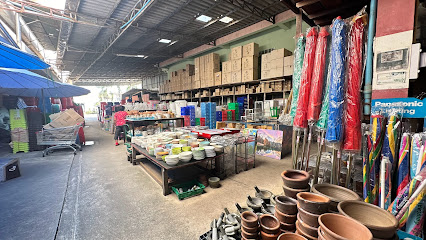
Luluulilac.store
Explore the charm of Luluulilac.store in Rayong for unique gifts and local crafts that embody the spirit of Thailand.
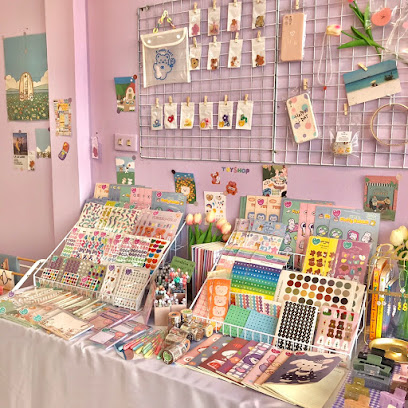
Essential bars & hidden hideouts
East House Pub & Restaurant's Restaurant.
Discover the vibrant nightlife at East House Pub & Restaurant in Rayong, where delicious food meets live music and unforgettable experiences.
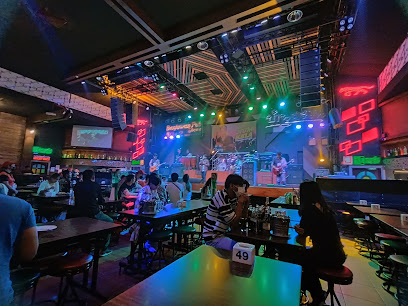
Zoods & Virtigo Bar & Karaoke
Experience vibrant nightlife at Zoods & Virtigo Bar & Karaoke in Rayong, where music, drinks, and unforgettable moments await.
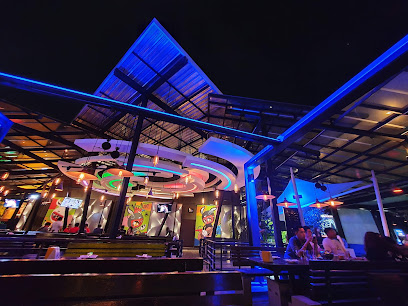
Elementi Rooftop Restaurant & Bar
Discover the stunning views and delightful Western cuisine at Elementi Rooftop Restaurant & Bar in Rayong, Thailand.
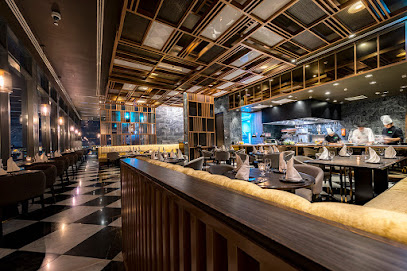
O'Sea Beach Bar โอซี บีช บาร์ ระยอง
Experience the vibrant atmosphere and stunning ocean views at O'Sea Beach Bar in Rayong, where relaxation meets lively entertainment.
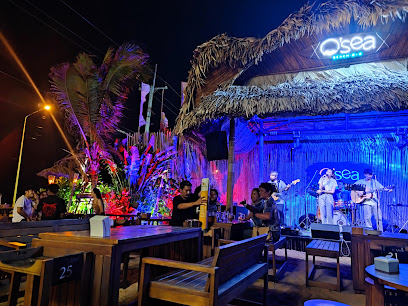
YOLO Bar&Garden
Discover YOLO Bar & Garden, where vibrant nightlife meets a lush garden ambiance in the heart of Rayong, Thailand.
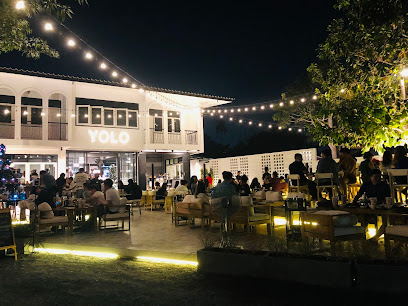
Kuad Bar&Cafe
Experience the vibrant atmosphere of Kuad Bar & Cafe in Rayong, where craft beers and delectable chocolate treats await.
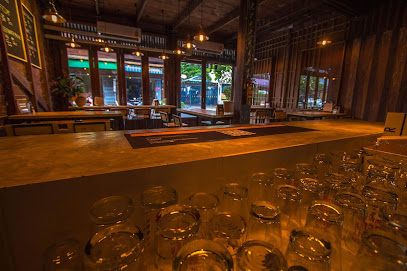
Moonless World ธรรมดาโลกไม่จำ
Experience the Magic of Moonless World: Rayong's Premier Cocktail Bar with Exquisite Drinks and Enchanting Ambiance.
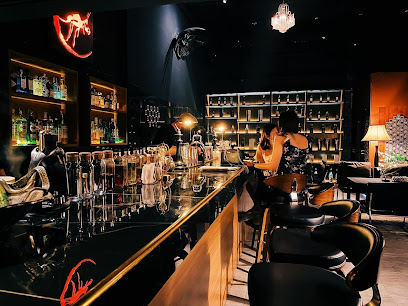
Boom & Bell Ice Beer
Discover the vibrant flavors of Rayong at Boom & Bell Ice Beer, where delicious grilled dishes meet a lively bar atmosphere.
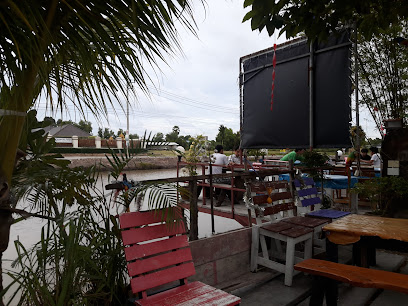
Moof bar&eatery
Discover the vibrant nightlife at Moof Bar & Eatery in Rayong, where delicious food meets live music for an unforgettable experience.
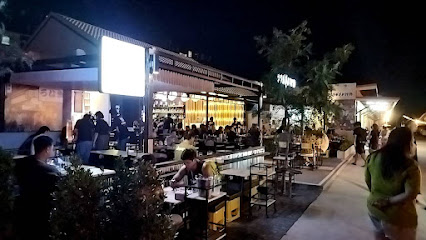
เบิกบาน Burg Baan - Comfort Food Good Drinks
Experience comfort food and great drinks at เบิกบาน Burg Baan, a cozy bar in Rayong perfect for relaxation after a day of adventures.
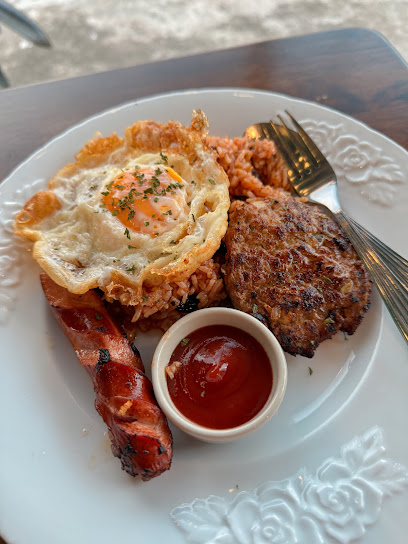
Rayong bar
Discover the lively Rayong Bar, a must-visit spot for tourists to enjoy delightful cocktails and vibrant nightlife in Rayong, Thailand.

Joy Star Beer Garden
Discover the lively Joy Star Beer Garden in Rayong, where refreshing drinks and a vibrant atmosphere await you.

MASS BAR RAYONG
Discover the vibrant nightlife at MASS BAR RAYONG, where refreshing drinks and good company await in the heart of Thailand's coastal paradise.
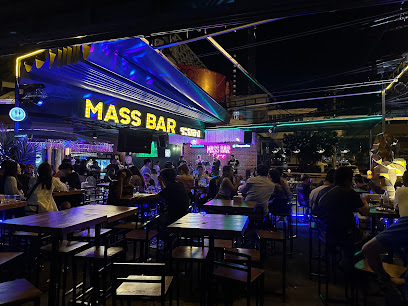
โอเพนมายด์ แอคคูซีฟ เอ็นเตอร์เทนเม้นท์ ระยอง
Discover the lively ambiance and exceptional entertainment at Open Mind Exclusive Entertainment, the ultimate pub experience in Rayong, Thailand.
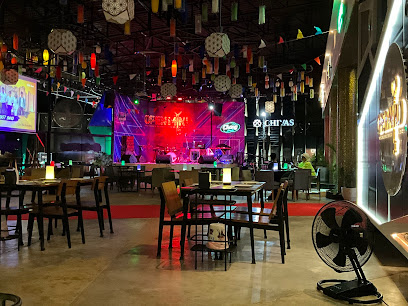
Country bar Rayong
Experience the vibrant Southern charm at Country Bar Rayong, where great drinks and live music create unforgettable memories.
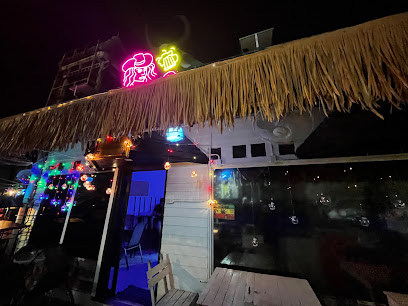
Local Phrases
-
- Helloสวัสดี
[sawasdee] - Goodbyeลาก่อน
[laa kon] - Yesใช่
[chai] - Noไม่
[mai] - Please/You're welcomeโปรด/ไม่เป็นไร
[prode/mai pen rai] - Thank youขอบคุณ
[khob khun] - Excuse me/Sorryขอโทษ
[khaw toht] - How are you?สุขสบายไหม?
[suk sa bai mai] - Fine. And you?สบายดีค่ะ คุณล่ะ?
[sabai dee kha kun la?] - Do you speak English?คุณพูดภาษาอังกฤษได้ไหม?
[kun poot paa saa angkrit dai mai?] - I don't understandฉันไม่เข้าใจ
[chan mai kao jai]
- Helloสวัสดี
-
- I'd like to see the menu, pleaseฉันอยากดูเมนู ขอบคุณ
[chan yak du menu khob khun] - I don't eat meatฉันไม่กินเนื้อ
[chan mai kin neuua] - Cheers!ชนเคอร์ส!
[chon kher] - I would like to pay, pleaseฉันอยากจ่ายเงิน ขอบคุณ
[chan yak jai ngern khob khun]
- I'd like to see the menu, pleaseฉันอยากดูเมนู ขอบคุณ
-
- Help!ช่วยด้วย!
[chuai duay] - Go away!ไปทางอื่น!
[pai tang uen] - Call the Police!โทรตำรวจ!
[tor tamruat] - Call a doctor!โทรหมอ!
[tor mor] - I'm lostฉันหลงทาง
[chan long tang] - I'm illฉันไม่สบาย
[chan mai sabai]
- Help!ช่วยด้วย!
-
- I'd like to buy...ฉันอยากซื้อ...
[chan yak seuu] - I'm just lookingฉันแค่มอง
[chan kae mong] - How much is it?ราคาเท่าไหร่?
[ra kha thao rai] - That's too expensiveแพงเกินไป
[paeng gein pai] - Can you lower the price?ลดราคาได้ไหม?
[lot ra kha dai mai]
- I'd like to buy...ฉันอยากซื้อ...
-
- What time is it?กี่โมงแล้ว?
[gi mong laeo] - It's one o'clockเป็นโมงเท่าขึ้น
[pen mong thao khuen] - Half past (10)สามทุ่ม
[sam thum] - Morningเช้า
[chao] - Afternoonบ่าย
[bai] - Eveningเย็น
[yen] - Yesterdayเมื่อวาน
[meua wan] - Todayวันนี้
[wan ni] - Tomorrowพรุ่งนี้
[phrung ni] - 1หนึ่ง
[neung] - 2สอง
[song] - 3สาม
[sam] - 4สี่
[si] - 5ห้า
[ha] - 6หก
[hok] - 7เจ็ด
[jet] - 8แปด
[paet] - 9เก้า
[gao] - 10สิบ
[sip]
- What time is it?กี่โมงแล้ว?
-
- Where's a/the...?...อยู่ที่ไหน?
[...yu tee nai?] - What's the address?ที่อยู่คืออะไร?
[tee yu keu arai?] - Can you show me (on the map)?คุณแสดงให้ฉันดูได้ไหม?
[kun sa deng hai chan du dai mai?] - When's the next (bus)?รถเมล์ต่อไปเมื่อไหร่?
[rote mel tor pai meua rai?] - A ticket (to ....)ตั๋วไป...
[tau pai...]
- Where's a/the...?...อยู่ที่ไหน?
History of Rayong
-
The history of Rayong dates back to the period when the region was inhabited by various indigenous tribes. These early settlers lived off the land, engaged in fishing, and cultivated crops. Archaeological evidence suggests that these communities were well-established by the first millennium CE.
-
During the 14th to 18th centuries, Rayong was part of the Ayutthaya Kingdom, one of the most prosperous periods in Thai history. The region served as an important trading and fishing hub. The influence of Ayutthaya is evident in the architectural ruins and ancient temples scattered around Rayong.
-
In 1767, the Burmese army invaded Ayutthaya, leading to its eventual downfall. During this tumultuous period, Rayong became a refuge for those fleeing the destruction. The town of Rayong played a crucial role as a retreat and regrouping area for Thai forces led by General Phraya Tak, who later became King Taksin the Great.
-
Rayong holds a significant place in the history of King Taksin the Great. After the fall of Ayutthaya, Taksin regrouped his forces in Rayong before launching a campaign to reclaim Thai territories. He eventually established the Thonburi Kingdom and successfully liberated Siam from Burmese control. The Wat Lum Mahachai Chumpon temple in Rayong commemorates his legacy.
-
The 19th and early 20th centuries saw increased Western influence in Thailand, including Rayong. The region became a key trading port, exporting agricultural products, seafood, and timber to foreign markets. The colonial era brought modern infrastructure and introduced new cultural elements to Rayong.
-
Post-World War II, Rayong underwent significant economic transformation. The establishment of the Map Ta Phut Industrial Estate in the 1980s turned Rayong into one of Thailand's major industrial centers. This period marked rapid urbanization, with advancements in transportation, education, and healthcare facilities.
-
Today, Rayong is a vibrant province that balances traditional Thai culture with modern advancements. The region is known for its beautiful beaches, lush national parks, and rich cultural heritage. Festivals such as the Rayong Fruit Festival and local markets like the Ban Phe Market highlight the province’s enduring cultural traditions.
Rayong Essentials
-
Rayong is located on the eastern coast of Thailand, approximately 180 kilometers from Bangkok. The nearest international airport is U-Tapao Rayong Pattaya International Airport, about 30 kilometers from Rayong city. From Bangkok, you can take a bus or a minivan from the Eastern Bus Terminal (Ekkamai) to Rayong, which takes around 3 to 4 hours. Alternatively, you can hire a private taxi or rent a car for a more comfortable journey.
-
Rayong offers various modes of transportation for getting around. Local songthaews (shared pick-up trucks) are a popular and inexpensive option for short distances. Motorbike taxis are also available and are a quick way to navigate through the city. For longer distances, you can hire a private taxi or rent a car. Bicycles are available for rent and are an eco-friendly way to explore the city and its surroundings.
-
The official currency in Thailand is the Thai Baht (THB). Credit and debit cards are widely accepted in hotels, restaurants, and larger shops in Rayong. However, it's advisable to carry some cash for smaller establishments, markets, and street vendors. ATMs are readily available throughout the city, and currency exchange services can be found in banks and exchange kiosks.
-
Rayong is generally a safe destination for tourists, but it's always important to take standard precautions. Avoid walking alone at night in unfamiliar areas and be cautious with your belongings in crowded places. While Rayong does not have specific high-crime areas targeting tourists, it is always wise to stay vigilant and aware of your surroundings. Avoid dark and isolated areas, especially late at night.
-
In case of an emergency, dial 191 for police assistance and 1669 for medical emergencies. Rayong has several hospitals and clinics available for medical care. It's recommended to have travel insurance that covers medical emergencies. For minor health issues, pharmacies are available throughout the city where you can purchase over-the-counter medications.
-
Fashion: Do dress modestly, especially when visiting temples or religious sites. Avoid wearing overly revealing clothing. Religion: Do respect local customs and traditions. Always remove your shoes before entering temples and dress conservatively. Public Transport: Do be respectful and offer your seat to monks, the elderly, and pregnant women. Don't eat or drink on public transport. Greetings: Do greet people with a 'wai,' a traditional Thai gesture of respect by placing your palms together in a prayer-like position. Eating & Drinking: Do try local dishes and street food, but be cautious with street vendors' hygiene. Don't touch food with your left hand as it is considered impolite.
-
To experience Rayong like a local, visit the local markets such as the Yomjinda Road Market, where you can buy fresh produce and local goods. Engage with locals, as they are often friendly and willing to share stories about the city's history and culture. Don't miss visiting the Rayong Aquarium and the beautiful beaches of Mae Ram Phueng and Laem Mae Phim. For a unique experience, take a boat trip to nearby islands such as Koh Samet for a day of relaxation and snorkeling.
Trending Landmark in Rayong
-
Rayong Aquarium
-
Khao Laem Ya–Mu Ko Samet National Park
-
Ko Kloi Floating Market
-
Thung Prong Thong (Golden Meadow)
-
Sunthon Phu Monument
-
Laem Charoen Beach
-
Suan Lamai
-
Moonlight Beach
-
Wat Tham Khao Prathun
-
Suan Si Mueang
-
Phra Chedi Klang Nam (Samut Chedi)
-
Ruksame Bridge
-
Suan Wang Kaew
-
Khao Laem Ya Viewpoint
-
Suan Son Beach
Nearby Cities to Rayong
-
Things To Do in Pattaya
-
Things To Do in Samut Prakan
-
Things To Do in Trat
-
Things To Do in Hua Hin
-
Things To Do in Bangkok
-
Things To Do in Ayutthaya
-
Things To Do in Battambang
-
Things To Do in Koh Kong
-
Things To Do in Kanchanaburi
-
Things To Do in Nakhon Ratchasima
-
Things To Do in Siem Reap
-
Things To Do in Koh Rong
-
Things To Do in Chumphon
-
Things To Do in Sihanoukville
-
Things To Do in Koh Samui
















